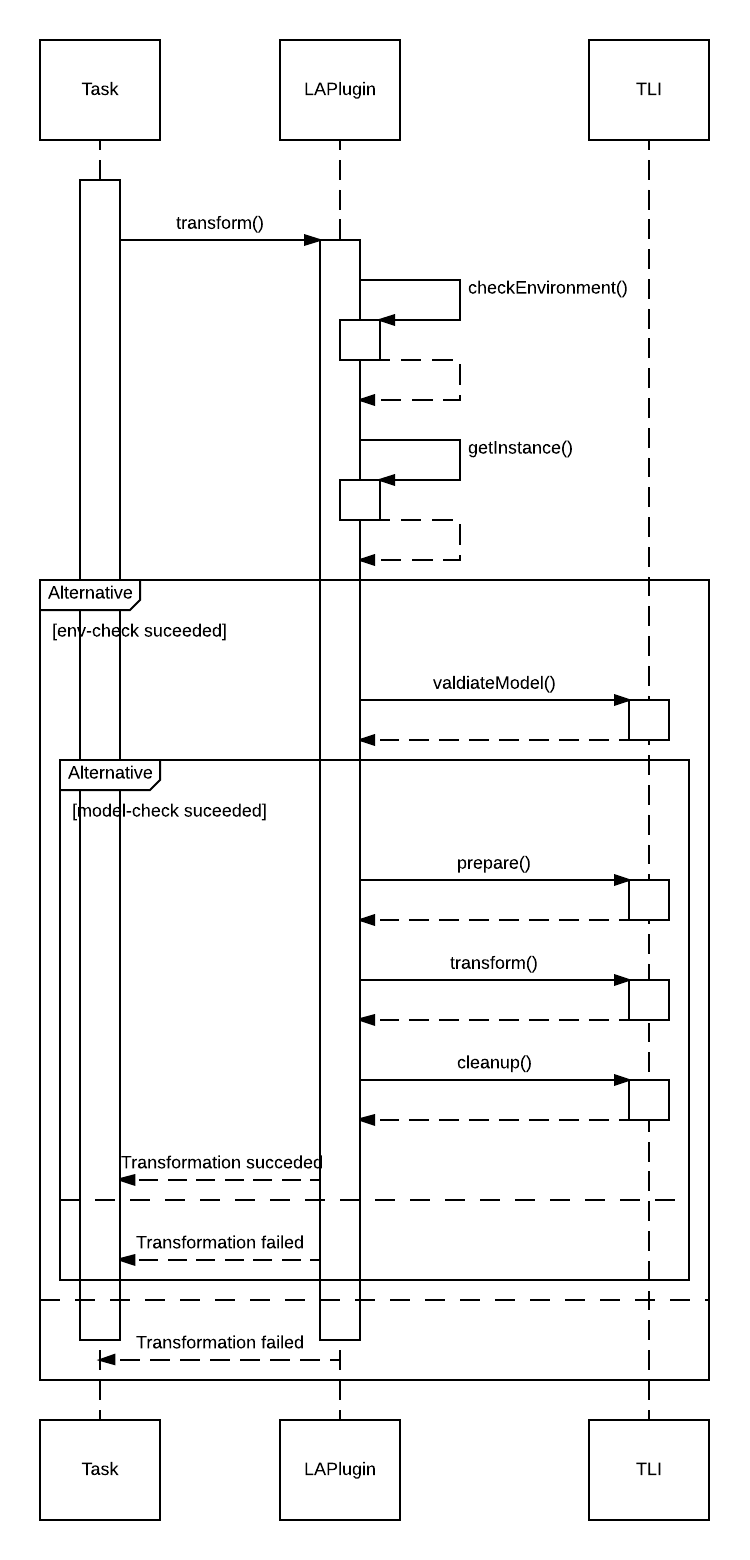Transformation Lifecycle architecture
Introduction
This document and the corresponding diagrams represent a potential architecture for the lifecycle operations of a transformation described in Pull Request #159.
validate()- The validation phase performs several checks to ensure that the transformation can even be executed (for details see Validation Phase)prepare()- in this step the plugin processes the graph to transform it in the following step. For example the Kubernetes plugin needs to split the graph into containers and pods.transform()- this is where the real transformation is happening.clean()- in this phase the plugin cleans up remaining leftovers from the previous steps. This can be for example files generated during the transformation that are not part of the target artifact.deploy()(Optional) - allows the deployment within the TOSCAna transformer. This phase is currently existing, but is not implemented by any plugin. If a plugin would support deployment yo have the ability to set a specific input (as a user) if this boolean input is set to true, the deployment phase will be executed.
The lifecyle approach is resolving several general issues:
- Splitting the transformation into tasks (lifecycle operations) allows a very simple progress calculation.
- Simplifies the plugin implementation in terms of code size because common parts can get externalized (removes boilerplate code)
- The plugins structure gets way clearer.
The TransformationLifecycleInterface (short: TLI) has methods that represent each task these methods get called in the sequence that was defined in PR Pull Request #159 (or above).
The creation is done using a factory method that has to be implemented by all subclasses of the BasePlugin (currently called AbstractPlugin) to produce a Plugin Specific instance of the TLI interface.
Validation Phase
The validation phase can be split into two different validation phases:
- environment check - in this phase the plugin should check if it has everything available to perform the transformation. This means that all required CLI applications have been installed and are accessible. For example: The kubernetes plugin needs a connection to a running docker daemon to perform the transformation (when following the point that docker images get built automatically)
- model check (property check) - this phase checks the model for invalid properties. For example the kubernetes plugin will reject the transformation if a node is based on windows.
Execution order
The execution of these phases should look like this:
env-check -> model-check
This order is chosen because the first task is probably the "simplest" one to execute and the last one (model check) is the most complex because we have to iterate over the whole graph to look for those problems.
Implementation approach
TOSCAna Plugin (just for illustration purposes):
public abstract class LifecycleAwarePlugin<T extends TransformationLifecycle>
implements TransformationPlugin {
protected abstract Set<Class<? extends RootNode>> getSupportedNodeTypes();
protected abstract boolean checkEnvironment();
protected abstract T getInstance(TransformationContext ctx);
public void transform(TransformationContext ctx) {
//This method will implement the mechanism to execute the seperate phases
}
}
Method descriptions
- checkEnvironment() - Performs ths env-check part of the validation phase
- getInstance() - Factory method, to produce a instance of the plugin specific Lifecycle interface with the given transformation Context
public interface TransformationLifecycle {
boolean validateModel();
void prepare();
void transform();
void cleanup();
}
Method descriptions
- validateModel() - This method should be used to check the model (probably by iterating over it). If a property is not supported (i.e. Windows on Kubernetes) the check should return false.
- prepare(), transform() and cleanup() - Perform the corresponding phase described in the Introduction
Sequence diagram
The order in which these methods get called is shown in the following sequence diagram:

Note: Because no plugin currently supports deployment, we decide to not add the phase in the sequence diagram. However the phase would get executed after the cleanup phase if the input has been set.